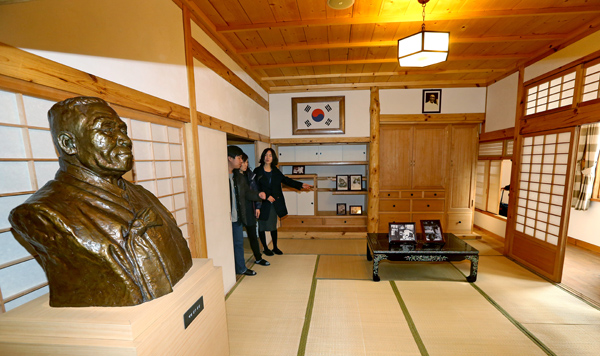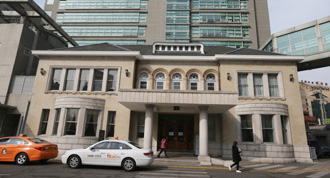Freedom fighter’s office re-opened as museum

A bust of Kim Gu, a leader of the Korean independence movement against Japan, is displayed at the second floor of Gyeonggyojang. The Seoul Metropolitan Government will open the place to the public tomorrow after wrapping up its three-year-long restoration work.
The Seoul Metropolitan Government said yesterday that Gyeonggyojang, designated as the country’s No. 465 historic site, will be opened tomorrow to the public for free.
The municipal government unveiled the venue to the media prior to the official opening. Gyeonggyojang, in Jongno, central Seoul, is what the Provisional Government of Korea used as a government office after they came back to Korea from China in November 1945. The provisional government had carried out an independence movement against the Japanese from outside the country. Korea was liberated from Japan in August 1945.

Gyeonggyojang, where Korean independence movement leader Kim Gu was assassinated, in Jongno District, central Seoul By Kim Sang-seon
It will display the living fashions of the time period and traces of the great Korean independence movement leader Kim Gu, including his bloodstained clothing from when he was assassinated by Ahn Doo-hee, a second-lieutenant of the Korean Army on June 26, 1949.
At the time, Ahn testified that Kim caused social and political turmoil because he agreed to hold a negotiation between Seoul and Pyongyang.
The first floor of the building was used as a conference room for government meetings, including cabinet meetings, and also used as an office for public relations as well as a restaurant for VIP guests.
The office and bedroom of Kim Gu were located on the second floor. The basement, which was used as a boiler room and kitchen at the time, is now a small exhibition hall that will display the history of the Provisional Government of Korea.
“We have tried to restore the place where people can feel the spirit for the independence movement of the provisional government and our great leader Kim Gu,” said Han Moon-chul, spokesman of the city government.
By Kwon Sang-soo [sakwon80@joongang.co.kr]










with the Korea JoongAng Daily
To write comments, please log in to one of the accounts.
Standards Board Policy (0/250자)